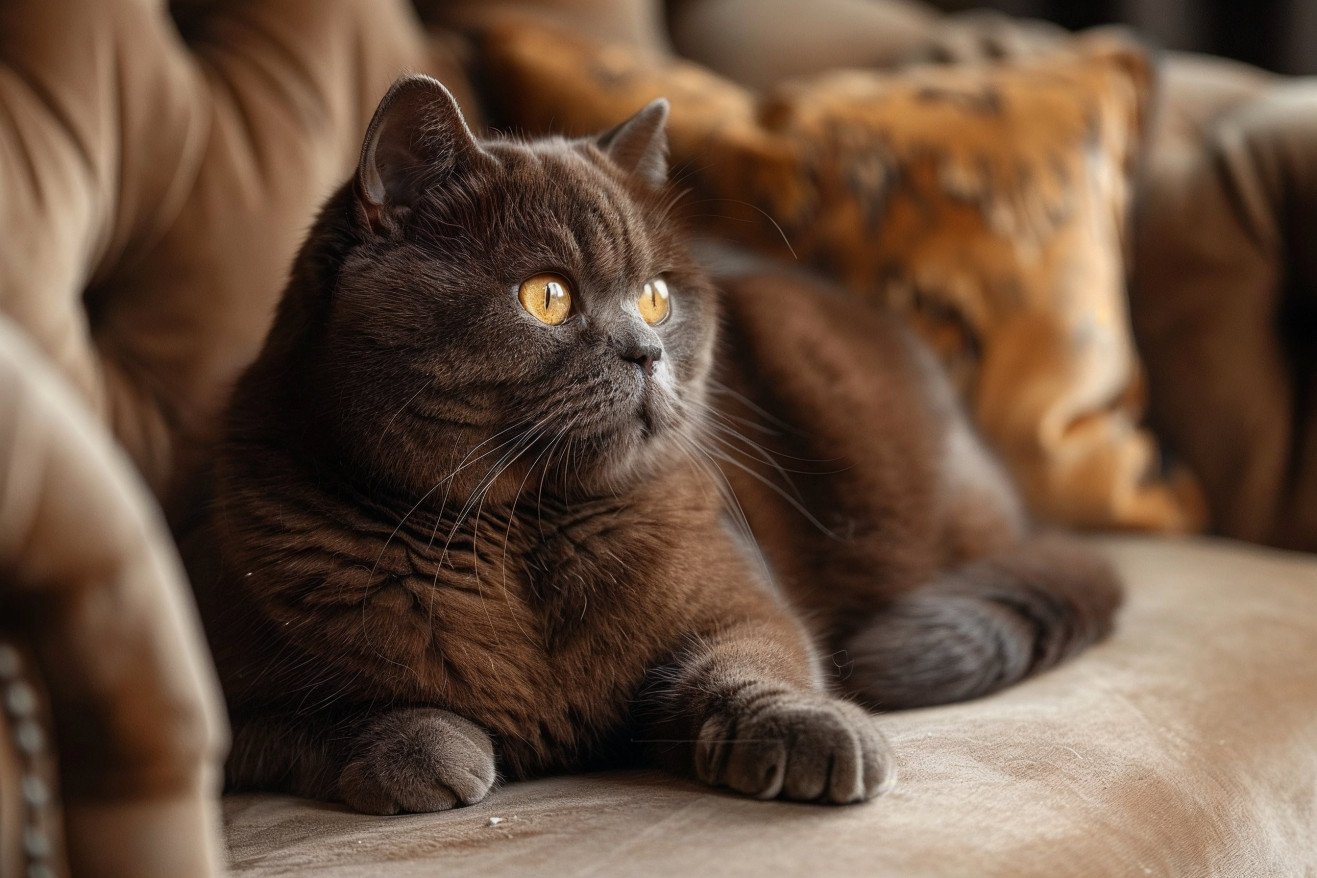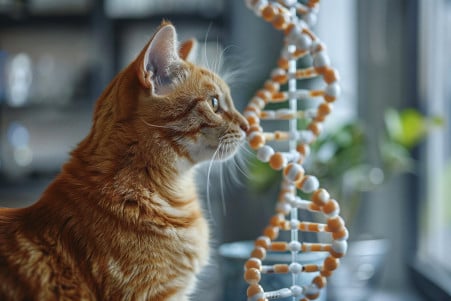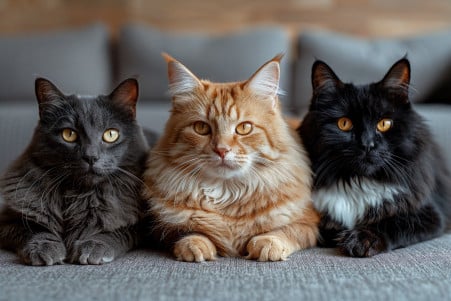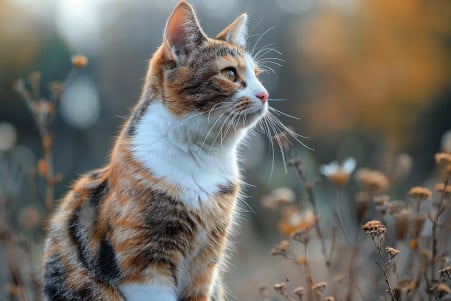How Rare Are Brown Cats? The Genetics and Psychology of Chocolate-Colored Felines
24 February 2024 • Updated 22 February 2024

Brown cats are a bit of a paradox in the cat world, but just how rare are they? The recessive gene that causes the chocolate coat color does indeed make brown cats rare. While breeds like the Havana Brown, Burmese, and Siamese have been known to carry the gene for brown coats, the color is less common in the general cat population due to selective breeding.
In this article, we will discuss the rarity of brown cats by looking at genetic studies and going deep into the genetics of cat coat color. We will also look at research by animal psychologists and talk to cat breeders to find out about the market and breeding decisions that lead to the rarity of brown cats.
This will give you a well-rounded look at why brown cats are rare and the factors that have led to their low numbers.
How rare are brown cats?
The Genetics of the Brown Cat
The answer to the mystery of the brown cat lies in the feline genetic code. More specifically, the Veterinary Genetics Laboratory notes that the brown coloration is due to the autosomal recessive nature of the B and E genes.
These genes control the production of eumelanin, the pigment that gives cats their darker colors. The dominant B gene results in black coloration, while the recessive b and bl genes result in chocolate and cinnamon (light brown) coloration, respectively.
This makes it especially difficult for breeders to produce cats with the less dominant gene forms, as both parent cats must carry the recessive gene forms.
Some breeds, such as the Havana Brown, are known for their luxurious brown coats. Genetic testing and genetics both come into play in determining whether a cat will have these special colorations.
Breeders can use test panels, such as those offered by the University of California, Davis, to determine a cat’s likelihood of inheriting and passing on these rare coat colors. Armed with this information, breeders can better control the breeding process, but the complexity of feline genetics means that producing brown cats will always be a bit of a genetic crapshoot.
Breeders who want to continue the proud tradition of brown cats need to understand how these genetic factors interact. This knowledge also highlights the importance of responsible breeding to ensure that these rare feline treasures remain healthy and vibrant.
The Complexities of Breeding Brown Cats
Brown cats can only be produced through selective breeding because the gene that causes brown fur is recessive and requires both parents to carry it. As a result, breeders often intentionally mate cats that are closely related to ensure that the brown color is passed on.
However, according to an article by VCA Animal Hospitals, this kind of inbreeding can lead to a number of health problems, including an increased likelihood of genetic diseases and a lack of genetic diversity, both of which are important to the overall health of cat populations.
In addition to the health problems that can result from inbreeding, there are also ethical concerns. Inbreeding can result in a number of inherited health problems. Cat breed associations, like The Cat Fanciers’ Association, have breeding standards that are designed to ensure the health and well-being of breeds like the Havana Brown, which is known for its unique brown coat, and therefore have a significant impact.
It’s important that responsible breeding practices are prioritized to ensure the health and well-being of all cats and to protect the genetic diversity and strength of the overall population. In particular, the preservation of these rare coat colors needs to be done in a way that prioritizes the long-term health of the breed to ensure that the appeal of brown cats doesn’t come at the expense of their health and genetic diversity.
Market Forces That Impact the Rarity of Brown Cats
In addition to genetics, market forces also impact the desirability of rare brown cats. Consumer demand has a significant impact on the breeds that are created and the coat colors that are popular. The American Pet Products Association found that the pet industry’s spending hit almost $100 billion, which shows how much people value pets, including rare breeds like brown cats.
Social media has also helped to drive the popularity of certain cat breeds and coat colors. The visual appeal of unique cats can quickly become a social media sensation, which then impacts consumer demand and, in turn, the cats that breeders choose to create.
A report from The Freedonia Group also noted that cats are becoming more popular in the pet market, which could lead to an increase in the popularity of unique breeds and coat colors.
The economic implications of breeding rare cat breeds, including those with brown coats, are significant. If there’s a high demand for a certain trait, breeders are more likely to focus on that trait, which can impact the availability and diversity of cat breeds. The Cat Fanciers’ Association, which is dedicated to purebred cats, also impacts how consumers view certain breeds, which in turn impacts the popularity of certain coat colors, including the rare brown.
As these market forces continue to change, it will be increasingly important to focus on responsible breeding and conservation to make sure that the genetic diversity and health of cat populations are maintained.
Saving the Legacy of Brown Cats: A Historical View
The history of brown cat breeds like the Havana Brown can be traced back to England in the 1950s when breeders intentionally mated Siamese and domestic black cats. These brown cats, originally called the Swiss Mountain cat, were nearly lost until post-World War II efforts to revive the breed. The Cat Fanciers Association played a key role in this revival by promoting breeding standards that led to the Havana Brown achieving championship status in 1964.
Today, breeders are still working to save the genetic heritage of the Havana Brown, with only a few catteries registered. The fact that these breeds are so rare has made their preservation a priority in the breeding world, and breeders and cat associations are working hard to ensure that the unique genetic heritage and traits of brown cat breeds are saved for future generations.
As we look back on the historical path of breeds like the Havana Brown, it’s important to remember the hard work of those who are trying to save their legacy. Breeders and associations are working tirelessly to save the genetic diversity of these cats, which will allow us to continue to enjoy the rich history of cats.
How to Choose and Care for a Rare Havana Brown
If you are interested in bringing a rare Havana Brown into your life, make sure you work with reputable breeders who are committed to the health and well-being of their cats.
Reputable breeders, as noted by The Spruce Pets, will have a wealth of information about the breed’s personality and care needs and will conform to the breed standards of organizations like the Cat Fanciers’ Association, which means that their Havana Browns will meet specific requirements in terms of their looks and temperament.
Potential owners should be ready for extensive health checks and genetic tests, which are important for identifying any genetic conditions that may be present in a breed with a small gene pool. VCA Animal Hospitals notes that a healthy diet and regular vet visits are important for keeping your cat healthy and avoiding issues that can come from obesity.
You can help ensure that the unique Havana Brown breed is preserved and that breeding is done ethically by getting involved with cat associations or breed clubs. These organizations will help you learn more about the work being done to preserve the breed and the best practices for breeding that will help ensure that this unique and historically important breed continues.
As you prepare to bring a Havana Brown into your life, remember that you are taking on the responsibility of caring for a rare and special animal, not just a pet.
The Elusiveness of Brown Cats: A Complex Mosaic of Genetics and Breeding
In conclusion, the rarity of brown cats is a complex combination of genetics, selective breeding, and market forces. At the heart of the issue is the recessive nature of the chocolate coat color gene, which means that both parent cats must carry and pass on this rare gene.
Breeders must balance the difficulty of creating these rare colors with the need to maintain ethical breeding practices and the health and genetic diversity of the breed.
Consumer demand and social media trends play a major role in the popularity of brown cats, which impacts both breeders and the market. While these factors contribute to the rarity of breeds like the Havana Brown, they also underscore the need for responsible breeding, conservation, and the preservation of genetic diversity.
In closing, let’s take a moment to appreciate the special nature of brown cats. Through ongoing learning, responsible pet ownership, and ethical breeding, we can help ensure that these rare feline treasures remain a part of our lives and continue to enchant cat lovers everywhere.


